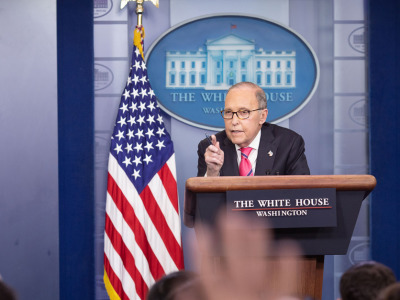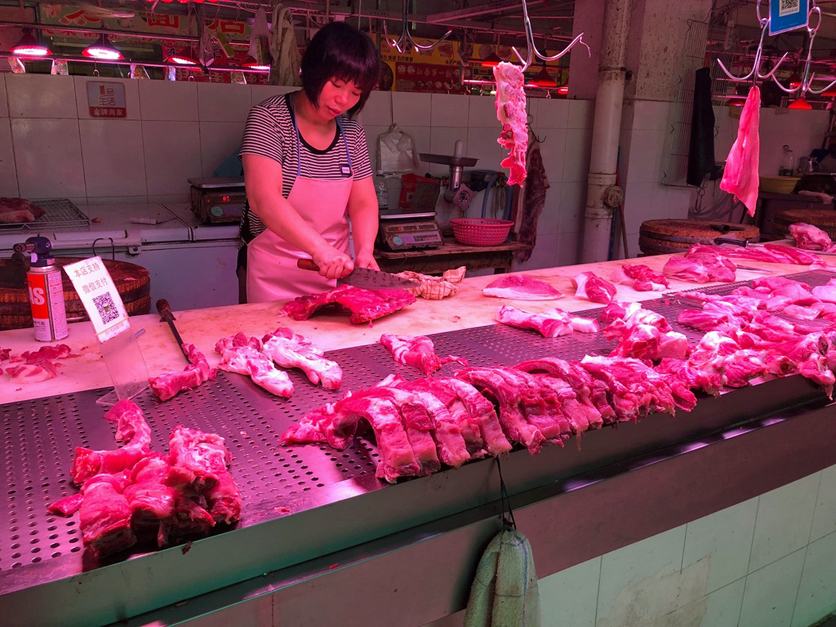China’s livestock sector is booming even as the country recovers from African swine fever, and the country’s demand for feed is fueling optimism for U.S. corn and soybean exports in the 2020-21 marketing year, which begins Sept. 1.
The USDA announced China’s largest ever corn purchase from the U.S. on Tuesday, totaling 1.762 million metric tons for delivery in 2020-21, and U.S. Grains Council President and CEO Ryan LeGrand tells Agri-Pulse that it’s more proof that demand is on the rise.
“We’ve always believed the demand is there,” LeGrand said. “They have been suffering from African swine fever, but they’re ringing the bell on these corn purchases.”
Just last Friday Chinese buyers snapped up 1.365 million tons of U.S. corn, 600,000 of which was a new crop purchase. That sale, when it happened, was the second largest Chinese purchase of U.S. corn. Now it’s the third largest after the Tuesday announcement.
These past two purchases have made China the number one customer of U.S. new crop corn.
“It just shows you when they’re in the market, they can really move things,” LeGrand said. “They still have a large swine herd. It got hit very hard by ASF, but there’s still demand. Poultry production has increased. Aquaculture continues to increase, and then you have the smaller sectors like mutton and beef that are increasing as well.”
Poultry consumption is rising fast in China. A lot of the demand there will be met by rising imports, but domestic production is also increasing quickly. China consumed 19 million metric tons of poultry in 2018, but that jumped to 23 million tons last year, and the Chinese are expected to eat about 25 million tons this year, according to USDA’s Foreign Agricultural Service.
The expansion in poultry production — together with a recovering swine sector — is also boosting China’s demand for soybeans, and the country’s crushers are making good money on strong margins, said Zhang Xiaoping, the China director for the U.S. Soybean Export Council.
China should see a 70% recovery in its domestic pork production by the end of the year, said Zhang, who predicted as much as a 12% increase in demand for feed.
That will be key for the remaining five and a half months of the 2020 calendar year, in which China has pledged to buy $36.5 billion worth of U.S. ag commodities — a stipulation in the “phase one” trade pact that went into effect in February.
With the recent flurry of Chinese contracts to buy new crop soybeans, signs are very positive for the 2020-21 marketing year, according to Randy Mittelstaedt, head of RJO Market Insights.
“By all means, they’ve been stepping up and making decent commitments on U.S. soybean purchases, but there’s a long way to go and we need to see a continuation of this situation,” Mittelstaedt said. “For 2020-21, China has currently bought 4.2 million metric tons of U.S. soybeans for new crop delivery. That’s the highest in six years for early July. At this time last year there were only 126,000 metric tons on the books (for 2019-20).”

Ryan LeGrand, U.S. Grains Council
Those sales and China’s strong demand — even after the record pace of Brazilian soybeans exports to China this year — have all been taken into account by USDA, which is still predicting a relatively low 2020-21 carryout for U.S. soybeans.
While the USDA on Friday raised its beginning stocks forecast to 620 million bushels, it’s still substantially lower than it was a year ago, and the projected ending stocks are very low, at just 425 million bushels.
“A year ago at this time (USDA was) forecasting ending stocks at 795 million bushels,” said Mittelstaedt. “So we’re looking at a balance sheet right now, from an ending stocks perspective, that is roughly half of what ending stocks were projected at a year ago, yet we’re currently at about 50 cents a bushel below where we were last year at this time.”
The pace of export sales and the U.S.-China relationship over the coming months will be key.
“The prospects of fulfilling the ‘phase one’ trade deal — that’s the million-dollar question,” Mittelstaedt said. “We are optimistic that we are going to see a significant increase in U.S. soybean exports to China this year … but the question really comes down to the end game on U.S. ending stocks and how this situation plays out.”
Interested in more coverage and insights? Receive a free month of Agri-Pulse or Agri-Pulse West by clicking here.
But the soured relations between President Donald Trump and Chinese President Xi Jinping are still casting a lot of doubt on the durability of the trade pact. Trump and members of his administration continue to blame China for the severity of the COVID-19 pandemic, and tensions continue to build over China’s clampdown on freedoms in Hong Kong.

White House National Economic Council Director Larry Kudlow
Trump and National Economic Council Director Larry Kudlow both assured reporters this week that the “phase one” deal is still intact, despite the rifts with Beijing.
“The president is not in a good mood about China, nor is anybody in the administration,” Kudlow told Fox Business Monday. “Having said all that, we are still engaging on the ‘phase one’ trade deal … China said they will implement their side of the deal.”
But the markets and farmers are jittery, Mittelstaedt warned.
“We are looking at a large amount of new crop sales on the books right now, so from that perspective it is encouraging,” he said. “Right now, we’re encouraged, but there really are some warning flags out there.”
For more news, go to www.Agri-Pulse.com


